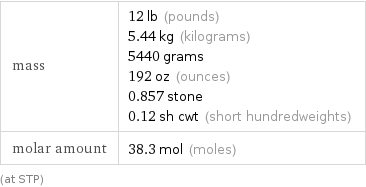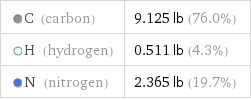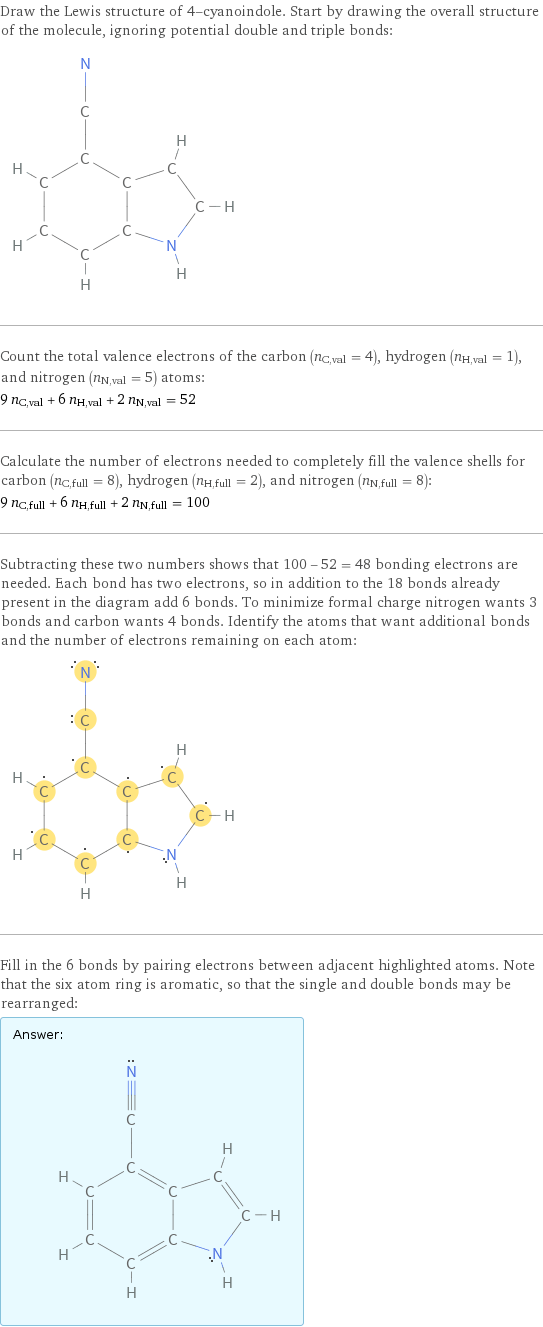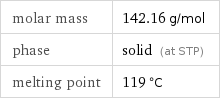Input interpretation

12 lb of 4-cyanoindole
Basic properties for 12 lb

mass | 12 lb (pounds) 5.44 kg (kilograms) 5440 grams 192 oz (ounces) 0.857 stone 0.12 sh cwt (short hundredweights) molar amount | 38.3 mol (moles) (at STP)
Mass composition for 12 lb

C (carbon) | 9.125 lb (76.0%) H (hydrogen) | 0.511 lb (4.3%) N (nitrogen) | 2.365 lb (19.7%)

Mass composition for 12 lb
Lewis structure

Draw the Lewis structure of 4-cyanoindole. Start by drawing the overall structure of the molecule, ignoring potential double and triple bonds: Count the total valence electrons of the carbon (n_C, val = 4), hydrogen (n_H, val = 1), and nitrogen (n_N, val = 5) atoms: 9 n_C, val + 6 n_H, val + 2 n_N, val = 52 Calculate the number of electrons needed to completely fill the valence shells for carbon (n_C, full = 8), hydrogen (n_H, full = 2), and nitrogen (n_N, full = 8): 9 n_C, full + 6 n_H, full + 2 n_N, full = 100 Subtracting these two numbers shows that 100 - 52 = 48 bonding electrons are needed. Each bond has two electrons, so in addition to the 18 bonds already present in the diagram add 6 bonds. To minimize formal charge nitrogen wants 3 bonds and carbon wants 4 bonds. Identify the atoms that want additional bonds and the number of electrons remaining on each atom: Fill in the 6 bonds by pairing electrons between adjacent highlighted atoms. Note that the six atom ring is aromatic, so that the single and double bonds may be rearranged: Answer: | |
Chemical names and formulas

formula | C_9H_6N_2 Hill formula | C_9H_6N_2 name | 4-cyanoindole IUPAC name | 1H-indole-4-carbonitrile
Substance properties

molar mass | 142.16 g/mol phase | solid (at STP) melting point | 119 °C
Units
